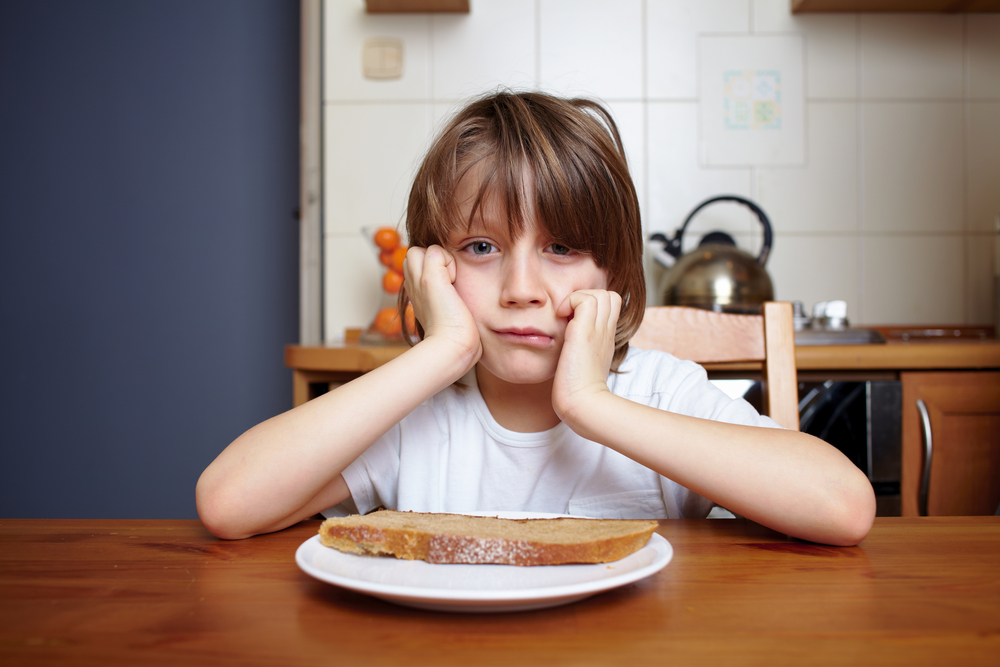The statistics are pretty shocking about kids and breakfast.
More than 10% of primary school age kids don’t eat breakfast, and this number climbs to about 30% by the time they are in high school.
Children who eat breakfast do better at school, as they have more energy and are more focused.
To make sure your child eats a nutritious breakfast, you need to set them up for success the night before. Be organised and be in charge!
-
Make your child’s breakfast for them.
In my previous job, I used to visit families in their homes at breakfast time to see their routines, and how they went about breakfast. I was shocked to see that lots of families hand responsibility for breakfast to their own kids, even from the age of 5. People had cereal in low cupboards, little tables in the kitchen and plastic bowls so the 5 year old children could sort themselves out with breakfast.
If you want a breakfast your child can make themselves, it will end up being cereal and milk, which is not a good choice. So my first, kind of glaringly obvious recommendation, is make your child’s breakfast for them.
This gives you many more healthy options.
-
Get your kids to bed earlier!
Children need a lot of sleep, which means they need to get to bed early.
You can’t expect a primary school child to be awake at 9.30pm and bounce out of bed at 7am. If your child is staying up late, bring bedtime earlier by 5-10 minutes each night until you get to a bedtime that has the child spontaneously waking, well before they need to leave for school.
A child who is tired in the morning may feel nauseous, and unable to eat. They will also be irritable and less likely to sit down and happily eat breakfast.
-
No devices or TV.
If your child gets up at an ungodly hour, this might seem like an impossible mission. But believe me, taking the device away and THEN expecting your child to fall into line is harder.
A child who is distracted by an iPad or the TV won’t want to eat breakfast, and their digestive system won’t be ready to receive food either.
Get a busy box ready for the child with some new craft supplies or puzzles, so they don’t reach for the ipad first thing.
-
Eat breakfast yourself!
If you sleep in and then run around in the morning unable to sit and eat some breakfast, you are setting that up as normal in your child’s mind.
So set the alarm 10 minutes earlier so you can sit down and eat properly before you run out the door.
-
Have breakfast that won’t cause an argument but will still feed your child’s brain for a day at school.
So here are my top 4 breakfast ideas for turbulent mornings to encourage even the most reluctant student!
Chocolate milkshake.
I kid you not. Set your child down with their favourite glass filled with a chocolate milkshake, and my job here is done.
Now, I haven’t completely lost the plot, this is clearly not a McDonald thickshake.
It has spinach leaves, raspberries, chia seeds, almond milk and cacao powder. You can’t even tell there is spinach in it. If your child does like to scrutinise things, put it in an opaque cup, preferably an old fashioned stainless steel milkshake cup, so they can’t see any green tinge. Cacaco and raspberries are full of antioxidants, so great for brains. There’s no dairy in this milkshake, as milk can be very inflammatory for kid’s brains. Chia seeds give a little boost of essential fatty acids.
Strawberry sundae.
Another super quick, super tempting idea is to make a strawberry sundae for breakfast. The key is to buy a really nice glass to have it from. A good quality yoghurt will contain lots pf probiotics (good bacteria). This can mean less stress, anxiety and depression and better problem solving skills. A 6 weeks study split 70 people into 2 groups. One group ate yoghurt, the other group didn’t. At the end of the study, the people eating probiotic rich yoghurt had 85% less stress, anxiety and depression than the people without the yoghurt. The berries are full of antioxidants, and low glycemic index.
Banana bread.
Whose kids don’t like banana bread? But, let’s face it, café style banana bread is actually cake. However it is possible to make a banana bread that tastes good, and is a healthy breakfast. My banana bread recipe is made with sunflower seeds instead of wheat flour. This means it is full of essential fatty acids (good for brains!), and is much lower glycemic index than normal banana bread. Seeds are also great for preventing constipation, and good gut health is the key to good behaviour.
Pancakes
Another café favourite has got to be pancakes, a roller coaster for your child’s blood sugar. Get them out the door with a stable blood sugar and your child’s teacher will thank you. Buckwheat pancakes are just as easy to make as normal pancakes, you just need to be prepared with slightly different ingredients. These keep well in the fridge, so you can easily make enough for a few days. Top with bananas, berries or mango.




